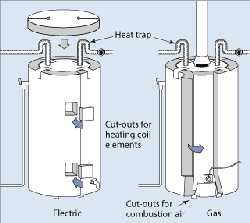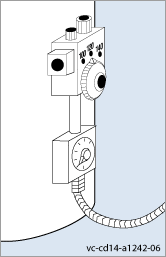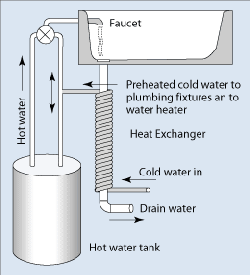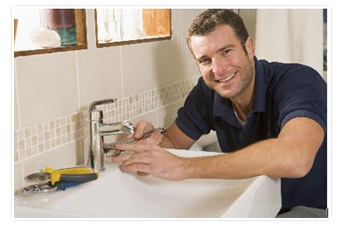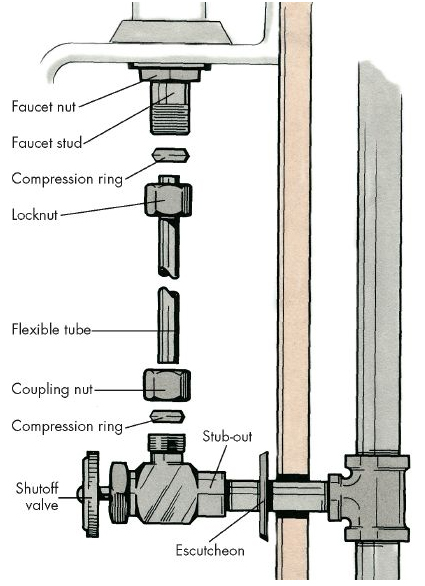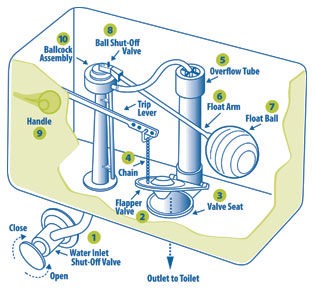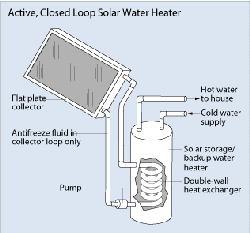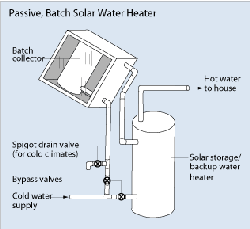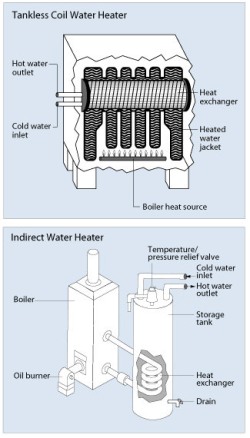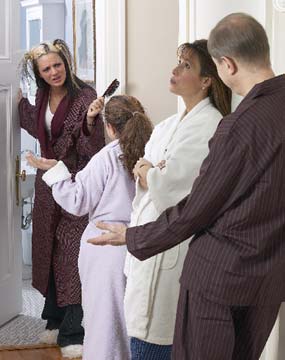You have a lot to consider when selecting a new water heater for your home.
You should choose a water heating system that will not only provide enough hot water but also that will do so energy efficiently, saving you money. This includes considering the different types of water heaters available and determining the right size and fuel source for your home.
Types of Water Heaters
It’s a good idea to know the different types of water heaters available before you purchase one:
Selection Criteria
When selecting the best type and model of water heater for your home, consider the following:
- Fuel type, availability and cost. The fuel type or energy source you use for water heating will not only affect the water heater’s annual operation costs but also its size and energy efficiency. See below for more on selecting fuel types.
- Size. To provide your household with enough hot water and to maximize efficiency, you need a properly sized water heater. Visit the pages on different types of water heaters (linked above) for more on sizing.
- Energy efficiency. To maximize your energy and cost savings, you want to know how energy efficient a water heater is before you purchase it. Visit the pages on different types of water heaters (linked above) for more on estimating energy efficiency.
- Costs. Before you purchase a water heater, it’s also a good idea to estimate its annual operating costs and compare those costs with other less or more energy-efficient models. Visit the pages on different types of water heaters (linked above) for more on estimating costs.
Also be sure to do what you can to reduce your hot water use. You may also want to explore other strategies such as drain-water heat recovery to save money on your water heating bill.
Fuel Types, Availability, & Costs for Water Heating
When selecting a new water heater, it’s important to consider what fuel type or energy source you will use, including its availability and cost. The fuel used by a water heating system will not only affect annual operation costs but also the water heater’s size and energy efficiency.
Exploring Water Heater Options by Fuel Type
Fuel type and its availability in your area may narrow your water heater choices. The following is a list of water heater options by fuel or energy source:
- Electricity: Widely available in the United States to fuel conventional storage, tankless or demand-type, and heat pump water heaters. It also can be used with combination water and space heating systems, which include tankless coil and indirect water heaters.
- Fuel oil: Available in some areas of the United States to fuel conventional storage water heaters, and indirect combination water and space heating systems.
- Geothermal energy: Available throughout the United States to those who will have or already have a geothermal heat pump system installed in their homes for space heating and cooling.
- Natural gas: Available in many areas of the United States to fuel conventional storage and demand (tankless or instantaneous) water heaters, as well as combination water and space heating systems, which include tankless coil and indirect water heaters.
- Propane: Available in many areas of the United States to fuel conventional storage and demand (tankless or instantaneous) water heaters, as well as indirect combination water and space heating systems.
- Solar energy: Available throughout the United States — most abundantly in the Southwest — for solar water heaters.
Comparing Fuel Costs and Water Heater Types
If you have more than one fuel type available in your area, it’s a good idea to compare fuel costs, especially if you’re building a new home. Even if you’re replacing a water heater, you may find that you’ll save more money in the long run if you use a different fuel or energy source. Contact your utility for current fuel costs or rates.
The type of water heater you choose will also affect your water heating costs. One type of water heater may use a fuel type more efficiently than another type of water heater. For example, an electric heat pump water heater typically is more energy efficient than an electric conventional storage water heater. Also, an electric heat pump water heater might have lower energy costs because of its higher efficiency than a gas-fired conventional storage water heater, even though local natural gas costs might be lower than the electricity rates.
Conventional Storage Water Heaters
Conventional storage water heaters remain the most popular type of water heating system for the home. Here you’ll find basic information about how storage water heaters work; what criteria to use when selecting the right model; and some installation, maintenance, and safety tips.
How They Work
A single-family storage water heater offers a ready reservoir — from 20 to 80 gallons — of hot water. It operates by releasing hot water from the top of the tank when you turn on the hot water tap. To replace that hot water, cold water enters the bottom of the tank, ensuring that the tank is always full.
Conventional storage water heater fuel sources include natural gas, propane, fuel oil, and electricity. Learn more about fuel types available when selecting a new water heater.
Since water is constantly heated in the tank, energy can be wasted even when a hot water tap isn’t running. This is called standby heat loss. Only tankless water heaters — such as demand-type water heaters and tankless coil water heaters — avoid standby heat losses. Some storage water heater models have heavily insulated tank, which significantly reduce standby heat losses and lower annual operating costs. Look for models with tanks that have a thermal resistance (R-Value) of R-12 to R-25.
Gas and oil water heaters also have venting-related energy losses. Two types of water heaters — a fan-assisted gas water heater and an atmospheric sealed-combustion water heater — reduce these losses. Visit the Energy Basics site to learn more about how conventional storage water heaters work.
You might also want to consider some less conventional storage water heaters — heat pump water heaters and solar water heaters. These water heaters are usually more expensive but they typically have lower annual operating costs.
Selecting a Storage Water Heater
The lowest-priced storage water heater may be the most expensive to operate and maintain over its lifetime. While an oversized unit may be alluring, it carries a higher purchase price and increased energy costs due to higher standby energy losses.
Before buying a new storage water heater, consider the following:
- Size and first hour rating
- Fuel type and availability
- Energy efficiency and costs.
Installation & Maintenance
Proper installation and maintenance of your water heater can optimize its energy efficiency.
Proper installation depends on many factors. These factors include fuel type, climate, local building code requirements, and safety issues, especially concerning the combustion of gas- and oil-fired water heaters. Therefore, it’s best to have a qualified plumbing and heating contractor install your storage water heater. Be sure to do the following when selecting a contractor:
- Request cost estimates in writing
- Ask for references
- Check the company with your local Better Business Bureau
- See if the company will obtain a local permit if necessary and understands local building codes, etc.
If you’re determined to install it yourself, first consult the water heater’s manufacturer. Manufacturers usually have the necessary installation and instruction manuals. Also, contact your city or town for information about obtaining a permit, if necessary, and about local water heater building codes.
Periodic water heater maintenance can significantly extend your water heater’s life and minimize loss of efficiency. Read your owner’s manual for specific maintenance recommendations.
Routine maintenance for storage water heaters, depending on what type/model you have, may include:
- Flushing a quart of water from the storage tank every three months
- Checking the temperature and pressure valve every six months
- Inspecting the anode rod every three to four years.
Return to Top
Demand (Tankless or Instantaneous) Water Heaters
Tankless water heaters, also known as demand-type or instantaneous water heaters, provide hot water only as it is needed. They don’t produce the standby energy losses associated with storage water heaters, which can save you money. Here you’ll find basic information about how they work, whether a tankless water heater might be right for your home, and what criteria to use when selecting the right model.
How They Work
Tankless water heaters heat water directly without the use of a storage tank. When a hot water tap is turned on, cold water travels through a pipe into the unit. Either a gas burner or an electric element heats the water. As a result, tankless water heaters deliver a constant supply of hot water. You don’t need to wait for a storage tank to fill up with enough hot water. However, a tankless water heater’s output limits the flow rate.
Typically, tankless water heaters provide hot water at a rate of 2–5 gallons (7.6–15.2 liters) per minute. Gas-fired tankless water heaters produce higher flow rates than electric ones. Sometimes, however, even the largest, gas-fired model cannot supply enough hot water for simultaneous, multiple uses in large households. For example, taking a shower and running the dishwasher at the same time can stretch a tankless water heater to its limit. To overcome this problem, you can install two or more tankless water heaters, connected in parallel for simultaneous demands of hot water. You can also install separate tankless water heaters for appliances — such as a clothes washer or dishwater — that use a lot of hot water in your home.
Other applications for demand water heaters include the following:
- Remote bathrooms or hot tubs
- Booster for appliances, such as dishwashers or clothes washers
- Booster for a solar water heating system.
Advantages & Disadvantages
For homes that use 41 gallons or less of hot water daily, demand water heaters can be 24%–34% more energy efficient than conventional storage tank water heaters. They can be 8%–14% more energy efficient for homes that use a lot of hot water — around 86 gallons per day. You can achieve even greater energy savings of 27%–50% if you install a demand water heater at each hot water outlet. ENERGY STAR® estimates that a typical family can save $100 or more per year with an ENERGY STAR qualified tankless water heater.
The initial cost of a tankless water heater is greater than that of a conventional storage water heater, but tankless water heaters will typically last longer and have lower operating and energy costs, which could offset its higher purchase price. Most tankless water heaters have a life expectancy of more than 20 years. They also have easily replaceable parts that extend their life by many more years. In contrast, storage water heaters last 10–15 years.
Tankless water heaters can avoid the standby heat losses associated with storage water heaters. However, although gas-fired tankless water heaters tend to have higher flow rates than electric ones, they can waste energy if they have a constantly burning pilot light. This can sometimes offset the elimination of standby energy losses when compared to a storage water heater. In a gas-fired storage water heater, the pilot light heats the water in the tank so the energy isn’t wasted.
The cost of operating a pilot light in a tankless water heater varies from model to model. Ask the manufacturer how much gas the pilot light uses for the model you’re considering. If you purchase a model that uses a standing pilot light, you can always turn it off when it’s not in use to save energy. Also consider models that have an intermittent ignition device (IID) instead of a standing pilot light. This device resembles the spark ignition device on some gas kitchen ranges and ovens.
Selecting a Demand Water Heater
Before buying a demand water heater, you also need to consider the following:
- Size
- Fuel type and availability
- Energy efficiency (energy factor)
- Costs
Installation & Maintenance
Proper installation and maintenance of your demand water heater can optimize its energy efficiency.
Proper installation depends on many factors. These factors include fuel type, climate, local building code requirements, and safety issues, especially concerning the combustion of gas-fired water heaters. Therefore, it’s best to have a qualified plumbing and heating contractor install your demand water heater. Do the following when selecting a contractor:
- Request cost estimates in writing
- Ask for references
- Check the company with your local Better Business Bureau
- See if the company will obtain a local permit if necessary and understands local building codes.
If you’re determined to install your water heater yourself, first consult the manufacturer. Manufacturers usually have the necessary installation and instruction manuals. Also, contact your city or town for information about obtaining a permit, if necessary, and about local water heater installation codes.
Return to Top
Solar Water Heaters
Solar water heaters—also called solar domestic hot water systems—can be a cost-effective way to generate hot water for your home. They can be used in any climate, and the fuel they use—sunshine—is free.
How They Work
Solar water heating systems include storage tanks and solar collectors. There are two types of solar water heating systems: active, which have circulating pumps and controls, and passive, which don’t.
Most solar water heaters require a well-insulated storage tank. Solar storage tanks have an additional outlet and inlet connected to and from the collector. In two-tank systems, the solar water heater preheats water before it enters the conventional water heater. In one-tank systems, the back-up heater is combined with the solar storage in one tank.
Three types of solar collectors are used for residential applications:
- Flat-plate collector: Glazed flat-plate collectors are insulated, weatherproofed boxes that contain a dark absorber plate under one or more glass or plastic (polymer) covers. Unglazed flat-plate collectors—typically used for solar pool heating—have a dark absorber plate, made of metal or polymer, without a cover or enclosure.
- Integral collector-storage systems: Also known as ICS or batch systems, they feature one or more black tanks or tubes in an insulated, glazed box. Cold water first passes through the solar collector, which preheats the water. The water then continues on to the conventional backup water heater, providing a reliable source of hot water. They should be installed only in mild-freeze climates because the outdoor pipes could freeze in severe, cold weather.
- Evacuated-tube solar collectors: They feature parallel rows of transparent glass tubes. Each tube contains a glass outer tube and metal absorber tube attached to a fin. The fin’s coating absorbs solar energy but inhibits radiative heat loss. These collectors are used more frequently for U.S. commercial applications.
There are two types of active solar water heating systems:

- Direct circulation systems: Pumps circulate household water through the collectors and into the home. They work well in climates where it rarely freezes.
- Indirect circulation systems: Pumps circulate a non-freezing, heat-transfer fluid through the collectors and a heat exchanger. This heats the water that then flows into the home. They are popular in climates prone to freezing temperatures.
Passive solar water heating systems are typically less expensive than active systems, but they’re usually not as efficient. However, passive systems can be more reliable and may last longer.
There are two basic types of passive systems:

- Integral collector-storage passive systems: These work best in areas where temperatures rarely fall below freezing. They also work well in households with significant daytime and evening hot-water needs.
- Thermosyphon systems: Water flows through the system when warm water rises as cooler water sinks. The collector must be installed below the storage tank so that warm water will rise into the tank. These systems are reliable, but contractors must pay careful attention to the roof design because of the heavy storage tank. They are usually more expensive than integral collector-storage passive systems.
Solar water heating systems almost always require a backup system for cloudy days and times of increased demand. Conventional storage water heaters usually provide backup and may already be part of the solar system package. A backup system may also be part of the solar collector, such as rooftop tanks with thermosyphon systems. Since an integral-collector storage system already stores hot water in addition to collecting solar heat, it may be packaged with a demand (tankless or instantaneous) water heater for backup.
Return to Top
Heat Pump Water Heaters
Most homeowners who have heat pumps use them to heat and cool their homes. But a heat pump also can be used to heat water — either as stand-alone water heating system, or as combination water heating and space conditioning system.
How They Work
Heat pump water heaters use electricity to move heat from one place to another instead of generating heat directly. Therefore, they can be two to three times more energy efficient than conventional electric resistance water heaters. To move the heat, heat pumps work like a refrigerator in reverse.
While a refrigerator pulls heat from inside a box and dumps it into the surrounding room, a stand-alone air-source heat pump water heater pulls heat from the surrounding air and dumps it — at a higher temperature — into a tank to heat water. You can purchase a stand-alone heat pump water heating system as an integrated unit with a built-in water storage tank and back-up resistance heating elements. You can also retrofit a heat pump to work with an existing conventional storage water heater.
Heat pump water heaters require installation in locations that remain in the 40º–90ºF (4.4º–32.2ºC) range year-round and provide at least 1,000 cubic feet (28.3 cubic meters) of air space around the water heater. Cool exhaust air can be exhausted to the room or outdoors. Install them in a space with excess heat, such as a furnace room. Heat pump water heaters will not operate efficiently in a cold space. They tend to cool the spaces they are in. You can also install an air-source heat pump system that combines heating, cooling, and water heating. These combination systems pull their heat indoors from the outdoor air in the winter and from the indoor air in the summer. Because they remove heat from the air, any type of air-source heat pump system works more efficiently in a warm climate.
Homeowners primarily install geothermal heat pumps — which draw heat from the ground during the winter and from the indoor air during the summer — for heating and cooling their homes. For water heating, you can add a desuperheater to a geothermal heat pump system. A desuperheater is a small, auxiliary heat exchanger that uses superheated gases from the heat pump’s compressor to heat water. This hot water then circulates through a pipe to the home’s storage water heater tank.
Desuperheaters are also available for tankless or demand-type water heaters. In the summer, the desuperheater uses the excess heat that would otherwise be expelled to the ground. Therefore, when the geothermal heat pump runs frequently during the summer, it can heat all of your water.
During the fall, winter, and spring — when the desuperheater isn’t producing as much excess heat — you’ll need to rely more on your storage or demand water heater to heat the water. Some manufacturers also offer triple-function geothermal heat pump systems, which provide heating, cooling, and hot water. They use a separate heat exchanger to meet all of a household’s hot water needs.
Selecting a Heat Pump Water Heater
Heat pump water heater systems typically have higher initial costs than conventional storage water heaters. However, they have lower operating costs, which can offset their higher purchase and installation prices.
Before buying a heat pump water heating system, you also need to consider the following:
- Size and first hour rating
- Fuel type and availability
- Energy efficiency (energy factor)
- Overall costs
If you’re considering installing an integrated water heating, space heating, and cooling heat pump system in your home, also see our information about air-source heat pumps and geothermal heat pumps.
Installation & Maintenance
Proper installation and maintenance of your heat pump water heating system can optimize its energy efficiency.
Proper installation depends on many factors. These factors include fuel type, climate, local building code requirements, and safety issues. Therefore, it’s best to have a qualified plumbing and heating contractor (or geothermal heat pump system installer/designer) install your heat pump.
Do the following when selecting a qualified professional:
- Request cost estimates in writing
- Ask for references
- Check the company with your local Better Business Bureau
- See if the company will obtain a local permit if necessary and understands local building codes.
Periodic water heater maintenance can significantly extend your water heater’s life and minimize loss of efficiency. Read your owner’s manual for specific maintenance recommendations.
Return to Top
Tankless Coil and Indirect Water Heaters
Tankless coil and indirect water heaters use a home’s space heating system to heat water. They’re part of what’s called integrated or combination water and space heating systems.

How They Work
A tankless coil water heater uses a heating coil or heat exchanger installed in a main furnace or boiler.
Whenever a hot water faucet is turned on, the water flows through the heat exchanger. These water heaters provide hot water on demand without a tank, like a demand water heater, but because they rely on the furnace or boiler to heat the water directly, tankless coil water heaters work most efficiently during cold months when the heating system is used regularly. That’s why they can be an inefficient choice for many homes, especially for those in warmer climates.
Indirect water heaters offer a more efficient choice for most homes, even though they require a storage tank. An indirect water heater uses the main furnace or boiler to heat a fluid that’s circulated through a heat exchanger in the storage tank. The energy stored by the water tank allows the furnace to turn off and on less often, which saves energy. Therefore, an indirect water heater is used with a high-efficiency boiler and well-insulated tank can be the least expensive means of providing hot water.
Indirect systems can be fired by gas, oil, propane, electric, solar energy, or a combination of any of these. Tankless systems are typically electric or gas-fired. Also, these integrated or combination water heating systems not only can work with forced air systems but also with hydronic or radiant floor heating systems.
Return to Top
U.S. Department of Energy – Energy Efficiency and Renewable Energy

